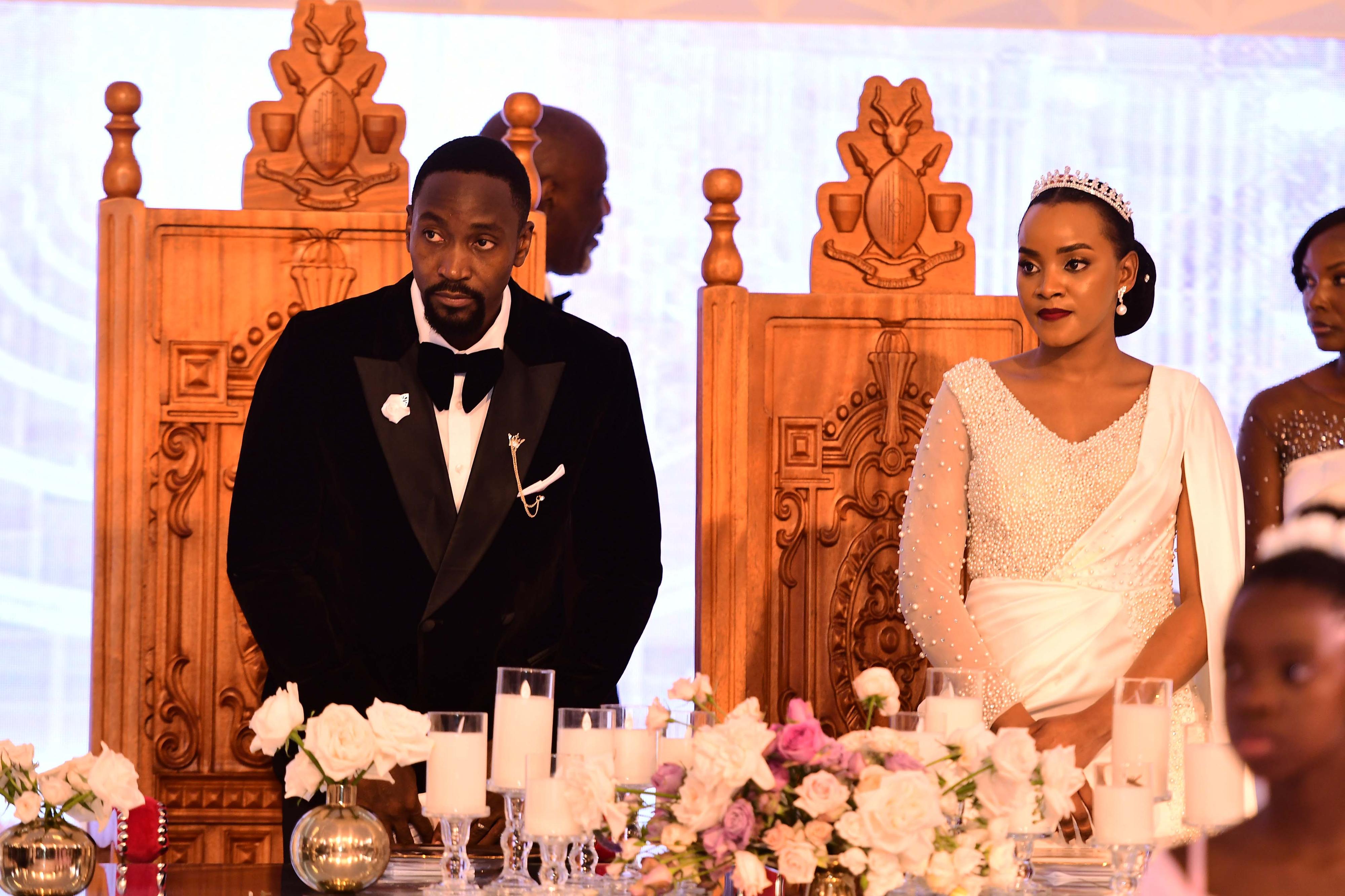Prime
Busoga’s new royal path

Kyabazinga William Nadiope and his bride Jovia Mutesi at their wedding last weekend. PHOTO/ABUBAKER LUBOWA
What you need to know:
- The huge task facing Nadiope in his role as the Kyabazinga has to be the re-branding and marketing of Busoga to do away with the unflattering stereotypes. The second task is to confront Uganda’s political reality and where Busoga fits in it.
Last week’s royal wedding in Busoga was arguably the biggest social event of the year in Uganda, if data on Internet and media attention are anything to go by.
By Wednesday, November 23, four days after the wedding, Busoga’s Kyabazinga (king), William Nadiope, and his bride, Jovia Mutesi, still dominated Internet and social media interest in the country.
For the first time since mid-2020, a public political or society leader who is not Bobi Wine was the most Google-searched in Uganda.
This was the Kyabazinga, although in northern Uganda, Mutesi registered even more interest than the Kyabazinga.
Trend-setter
For the first time in two decades, too, something out of Busoga was a trend-setter.
The last time this was the norm was during the heyday of the Kamuli-based Namasagali College dance-drama productions.
It’s likely that the Busoga royal couple will go past the wedding and become a society or fashionable symbol in the public’s image.
It couldn’t have come sooner.
Busoga has had to endure the humiliation of being associated with widespread infection of jiggers and consistently ranked as the most impoverished region in Uganda.
In the minds of most, including Basoga themselves, Busoga’s main town Jinja, once Uganda’s main industrial base, is now a sad shadow of its former self, dusty, rusty, and dead.
Although Busoga is located in the east-central part of Uganda, side by side with Buganda along the shores of Lake Victoria, Busoga feels like a distant, remote, inaccessible place to many.
The fact that Jinja is now the leading foreign tourism destination in Uganda does not register with most people.
Going by the comments on social media, even some of the national interest in the wedding was the surprise that there are women in Busoga like the bride who are good-looking.
The huge task facing Nadiope in his role as the Kyabazinga has to be the re-branding and marketing of Busoga to do away with the unflattering stereotypes.
He would need to create a dedicated media unit focused on that goal.
The second task is to confront Uganda’s political reality and where Busoga fits in it.
In the 2021 general election, Busoga and Buganda were the two regions that voted most heavily for the new political party, the National Unity Platform (NUP).
And yet at the royal wedding, almost all the invited political guests were from the ruling National Resistance Movement (NRM) and the faction affiliated to President Museveni’s son, Gen Muhoozi Kainerugaba, the so-called MK Movement.
For many complicated and understandable reasons, Kyabazinga Nadiope needs to cooperate with the Museveni government.
However, he is first and foremost the cultural leader of Busoga and so needs to be attentive to the fact that his kingdom is heavily NUP territory.
This means he must work to addressing the economic despair that turned Busoga toward NUP.
I’ve argued for years that Uganda’s problem is more a lack of minds than a lack of money.
Uganda government programmes such as National Agricultural Advisory Services (Naads), the Parish Development Model, and Universal Primary Education (UPE) fail not because of a lack of funds, but a lack of planning and execution.
The royal wedding, by all public appearances, went well and was a resounding success.
Behind the scenes, it had its fair share of loopholes that left a lot to be desired in organisation and media coverage in spite of the substantial sums of money that went into the wedding budget.
As the royal couple embark on their journey as the joint cultural symbols and rallying point of Busoga, they will need a team of very carefully selected advisers and coordinators to work out programmes that Nadiope and Mutesi can spearhead.
Firm stand
Here, the Kyabazinga will need to take a firm stand. He will have to make competence and technical knowledge the main consideration in whom he makes part of his team.
Just because Busoga has prominent people does not mean they should necessarily be on the Kyabazinga’s team.
He will have to employ people from other parts of Uganda or even from abroad if they can deliver results.
The Inhebantu, Mutesi, is about to take on her first official duties and get a taste of the often stressful and lonely nature of public service.
It will be important to carve out roles for her that are suitable for her age and 21st Century digital experience rather than try and fit her into a 19th Century role as the spouse of an African monarch.
What Busoga needs today is to gain an image of modernity, partly to fit into Jinja’s place as Uganda’s top tourism destination.
This is the role I see as more fitting for Mutesi than to have her main roles in the traditional, rather boring government-style immunisation and tree planting programmes.
The kingdom needs to be “re-Namasagalised”, so to speak.
A good example of this was the idea they came up with of creating a customised boat-shaped carriage to carry the royal wedding party after the church service.
Whoever came up with that idea needs to be given a medal and made a core member of the Kyabazinga’s team, if he or she is not already on it.
If the royal palace can come up with more of these kinds of charming, creative ideas, Busoga will at last dust off the embarrassing image it currently has and become the nerve centre of a new, fashionable, creative pulse, the way the eccentric Namasagali College became the byword for funkiness and style in Uganda from the late 1970s to the early 2000s.





